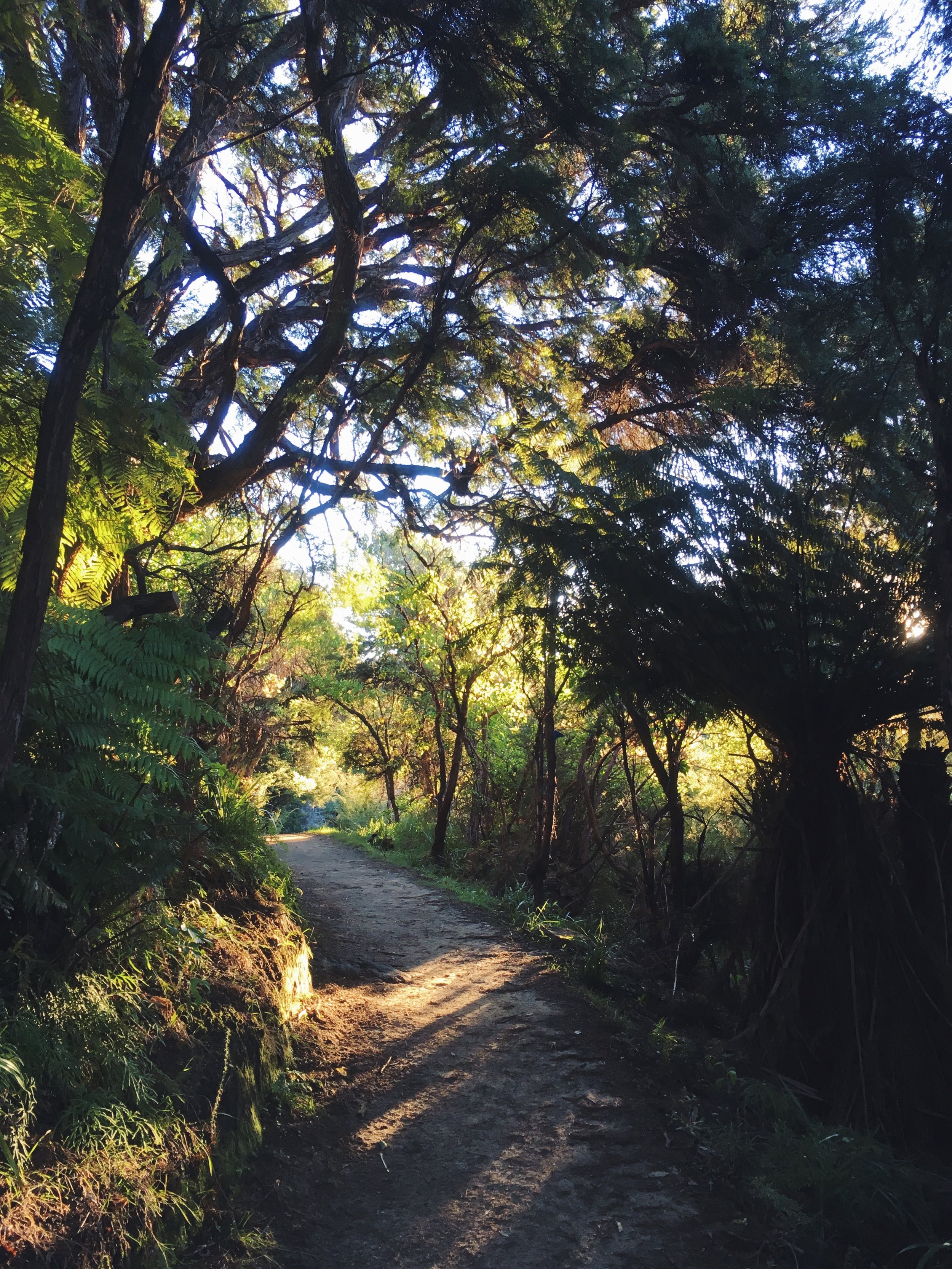Mish: Impossible Part I
Hola!
Let’s start with a lesson in Kiwi slang: Mish. The first thing you should know is that a large portion of Kiwi slang involves just shortening a word, so mish just means mission, and it usually refers to an adventure, outing, or somehow difficult task. For example, recently a mom came into the café where I work with a gaggle of kids in tow as well as a stroller and said upon arriving, “Woo, that was a bit of a mish, but we made it.”
Okay now that we’ve got that new Kiwi slang under our belts I can continue and let you know that I recently went westward from Nelson on a little three-day mish with a Kiwi friend. Nelson being situated smack dab in the middle of the north coast of the South Island, you’ve got pretty much three options for nature-oriented road trips—westward towards the Abel Tasman and Kahurangi National Parks, eastward towards the Marlborough Sounds, or southward towards Nelson Lakes National Park. All in all, three great options that make for a tough decision; I’m pretty spoilt for choice when it comes to natural beauty here. (You can zoom out on the map below for visual orientation.)
This particular mish started on another one of those crisp, clear, sunshiny fall mornings that Nelson does so well. The vehicle? My very own Kiwi whip, a little silver Subaru Impreza hatchback that I love not for her looks, but for her fuel efficiency and durability. I dubbed her Lil’ Beezy, because of her license plate that starts with BZ.
Lil' Beezy in all her glory, after I replaced a headlight (I'm a mechanic now.)
From Nelson it takes just about an hour to reach Abel Tasman via highway along the Tasman Bay coast, so we were all geared up and on the water in a kayak by midday. It was an absolute stunner of a day, like kayaking in a bathtub, and on top of that there was almost no one else out on the water, since we were at the tail end of the high-traffic season.
The rental company had advised us to stay the night at the Department of Conservation hut at Anchorage Bay, which was about a 12km paddle from the starting point. They made it very clear, repeating themselves multiple times, that if we reached a place called Watering Cove and it was around 3:30pm, we should stop there and take the 30-minute hike into Anchorage instead of continuing to kayak to the final destination.
Well folks, if you ever have to good fortune to make this trip and you have any experience or determination whatsoever you will 100% make it from Marahau to Anchorage in under 3 hours. Even with a swimming pit stop along the way, we arrived at Anchorage with about an hour and a half to spare. Given, we didn’t stop at Adele Island to see the seal colony, so that might add a half hour or so, but being from the pacific northwest of the US, I’ve seen my fill of seals--heck I’ve seen enough seals to have mooned one before.
The seal-less kayak adventure gave us enough time to walk the Pitt Head track at Anchorage during the last few hours of sunlight. A few months ago, during my first month in New Zealand, my friend Mary and I walked the same track in the mid-day summer sun to the near-deafening sound of cicadas. What a difference a few months makes, the only sounds were tui birds and there was a noticeable autumn chill in the air as afternoon turned to dusk. Still as stunning as ever, it was one of those moments where I remind myself how lucky I am to be able to spend a whole year here and appreciate this beautiful country in all four seasons.
I’ll finish up Part I of this post with a few tramping tips from Day 1:
Bring your frisbee
Two things I would suggest always bringing along on your overnight tramps (new Kiwi vocabulary alert! Tramp = hike) are a Frisbee and a deck of cards. Both lightweight and packable, they lead to new friends and technology-free funtimes. I would also suggest bringing along your Swiss Army Knife, but sometimes you forget it at home and you have to MacGyver it. In these cases, please take note that a credit card will do the trick when slicing open an avocado.
Go in the off-season
May is technically just on the cusp of the high season for Abel Tasman, which runs October to April. But the difference between mid-January and the beginning of May was significant. In the low season it’s much easier to make last-minute changes to plans, or just straight-up last-minute plans, and it’s so much more peaceful to have fewer humans around, be that on the water, on the trail, or in the Department of Conservation (DOC) huts.
Don’t forget to look up
If you’ve been staring at the ground walking all day or busting your butt in a kayak, it can be easy to want to hit your sleeping bag as soon as it gets dark. This, my friends, would be a giant mistake in Abel Tasman, because on a clear night I swear the stars there are the best I’ve seen in New Zealand. I daresay on par with (or even better than) Lake Tekapo, a dark sky reserve with highly restricted light pollution; basically land specifically set aside for stargazing.
Day 2 of this mish brought some tidal flat river-crossing adventures and reminders of why you always bring a second pair of socks, all to be detailed in Part II, coming soon!

